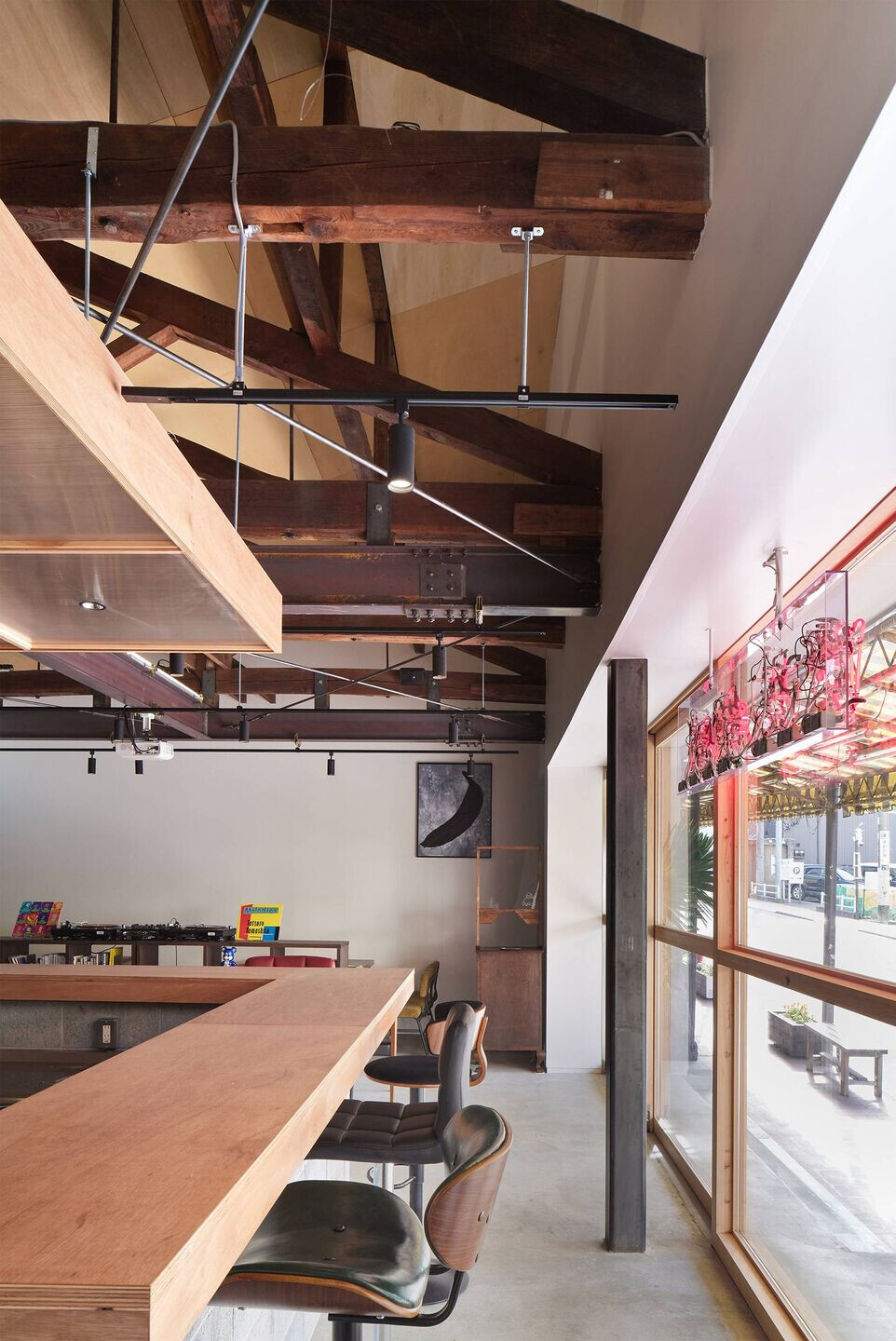Teahouse Lemon is one of the Fujiyoshida City Honcho-dori Avenue Revitalization Projects.Fujiyoshida City is located in Yamanashi Prefecture and known as the closest city to Mt. Fuji. The imposing mountain can be seen from everywhere and Honcho-dori Avenue, in particular, is the focus of media attention as a shopping street where Mt. Fuji can be looked up from a perfect angle.

The city also had been known as the center of textile industry for more than 1,000 years and enjoyed booming fashion industry and vibrant streets until the 1970s. Then, it started to decline with the development of global competition and the proliferation of cheap products all over Japan. Today, the once-thriving shopping street is almost deserted and dotted with closed shops and vacant houses that have pulled down their storefront shutters.

The aim of the project is to bring back a dynamic community, starting from the Honcho-dori Avenue. In a long term, new businesses will be developed by taking advantage of the traditional local industry and promoting local food, vacant houses and shops will be refurbished, and attractive contents will be produced and disseminated by communication-savvy creative people who are invited here.

Most importantly, if the project is publicized as a successful model caseof reutilization of a vacant house in a local community, it will encourage and inspire new activities such as new store openings, relocation from urban areas, dual-location living, and ‘workation (work + vacation)’. Eventually, it will generate additional investments and extra demand inside and outside the community that push the revitalization further.

Design Concept
The project was developed by a Tokyo-based design office Lemon Life that also runs the place. In their original idea, they wanted to create a space where local leaders who are committed to the future of Fujiyoshida City and Tokyo’s creative talent can mingle. In response to their request, we decided to add two stage-like structures. Various activities performed around these stagesby creative people from different backgrounds can bewatched as snippets of everyday life. Sometimes, the same scenes can be projected as an extraordinary moment in life seen in a movie.

The first structureis set in front of the teahouse facing Honcho-dori Avenue. In order to reinforce the house’s foundation, the floor is elevated approximately 400mm from the street. Then we put a symmetrical frame structure, 7,280mm in width and 2,400mm in height, on the elevated floor to make it look like a performing stage. Everyday activities happening inside the teahouse is shown to passers-by on the street like a movie.

This stage has other important functions. One is to secure a comfortable cross-sectional distance between the teahouse and the street. Honcho-dori Avenue is relatively narrow but it’s busy with the traffic of cars and large trucks. The elevated front area creates a cross-sectional distance from the busy street so that visitors inside can feel safer and more relaxed.Another is a function as street furniture. The height of the stage under the eaves of the shop is about the height of a chair. It is a good place for local people and tourists who are strolling the area to sit down to have a rest.

The second structureis a set of open kitchen that occupies a half of the floor area and a raised counter. It is designed to allow the guests to watch what’s happening inside the kitchen from every corner of the shop. This helps create intimacy between them and a chef.Polycarbonate boards hung from a ceiling function like a reflector, distributing light all around the shop andsupplying energy to the people in the kitchen.

The material and the shape of the counter is plain to make the interaction between the chef and guests stand out.I hope these structures will bring out energies from the chef, staff and guests and the vibrant teahouse will bring back liveliness on the street and to the area in the future.























































